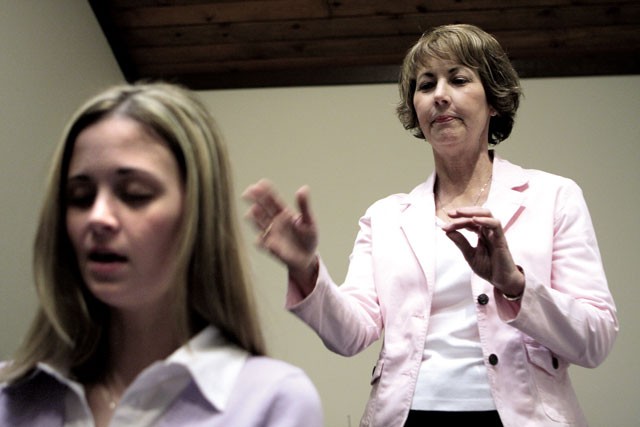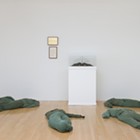
Pragmatists, it seems, are content with a little mystery in their method. So long as it works. “The first time I practiced on somebody, they told me their pain was better. I thought: That’s crazy. This is a placebo,” says Kari Joys, a Spokane-based psychotherapist with 25 years of experience, recounting her foray into the perplexing world of Chinese energetics. “It seemed too outrageous, to me, to believe it,” she says. But that was five years ago, and her skepticism has been… well, cured.
Joys says her journey into alternative healing began about five years ago. She investigated various kinds of healing arts, but none of them resonated with her until a friend introduced her to the work of Dr. Kam Yuen.
A 35th-generation Shaolin Kung Fu grandmaster, Yuen was the technical advisor for the 1970s TV show, Kung Fu. The World Black Belt organization lists him as a “living legend” and reports that the main character in the show was actually modeled after Yuen. He claims he won fights by perceiving and exploiting weaknesses in his opponents’ energy, which led to the realization that the same perception could be used for healing. He became a doctor of chiropractic and started his own school of Chinese energetic medicine called the “Yuen Method.” Based in California, Yuen now has 25,000 students nationwide.
Yuen subscribes to the ancient Chinese view that everyone has a central core of energy, life force or Qi (pronounced “chee”), and that most of our physical ills can be traced to weaknesses or blockages of this energy. Clearing the blockage and strengthening the weakness allows the body to naturally heal itself. The practitioner learns to pinpoint the root cause of the weakness with intuitive questions and simple muscle testing. “As you get further into it, you can feel it,” Joys says. “The second part is strengthening the energy alignment around the central part of the body — and this sounds odd — by focusing on it.” Yes, with your mind.
Joys signed up for a workshop. “Honestly, the first time I went, I was very skeptical,” she says. “I thought it couldn’t be that simple and he must have people planted in the audience.” Her doubt began to give way when she experienced the relief of pain herself at the hands of novices. The kicker came, she says, when she practiced on Sally — one of her clients — who was experiencing strong, chronic pain in her legs from an arthritic condition for which a doctor had prescribed medication and therapy.
“[The pain] moved from my knees down toward my feet,” Sally says. “Eventually, within half an hour, it was just gone.” She says she experienced a lesser pain on and off for a couple of months, but that a couple more Yuen sessions ended it permanently. “I do not have it anymore at all,” she says, a few years later.
Another client, Scott, thought it was too good to be true, also. “I’m skeptical of miracle cures, where you’re supposed to get better without typical medical approaches,” he says. He had multiple surgeries on both knees and was in a lot of pain. “I thought it was kinda crazy, but decided I’d give it a shot because I was really hurting,” he says. “The strange thing about it was that when we were done, I felt better than I had in months. It’s hard to explain, but I got a lot of relief through it for a very long time” — more than from painkillers and ice packs, he says.
Joys says she is pleased with the emergence of the term “complementary medicine” instead of “alternative.”
“Chinese energetics can often heal things that Western medicine cannot, but it’s not a guarantee,” she says. “It doesn’t do surgery, and it doesn’t have antibiotics. So there’s a place for both.” She says she would never have anybody see her instead of a doctor if they have a physical problem. But, she adds, the mind/body connection can’t be ignored.
“The most interesting thing for me is that there’s almost always a relationship between what they’re working on in therapy and the root causes of the chronic pain,” she says.















